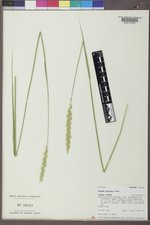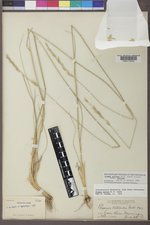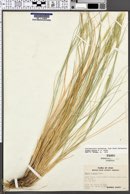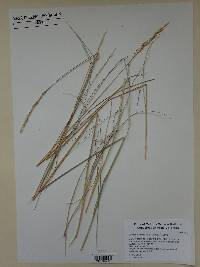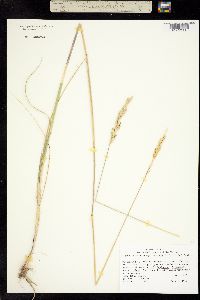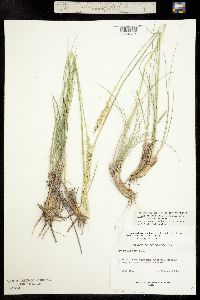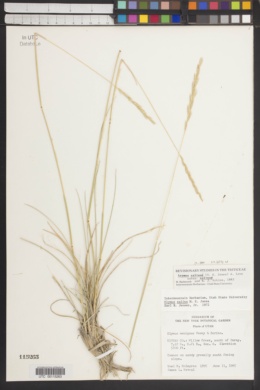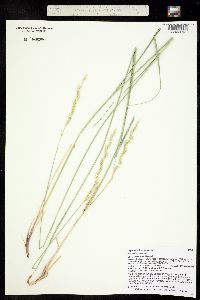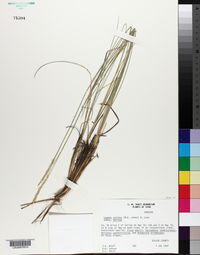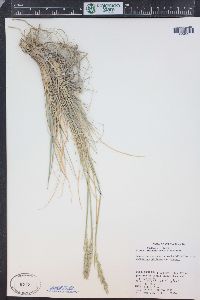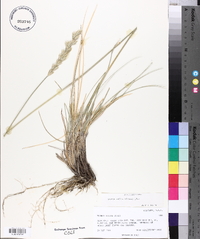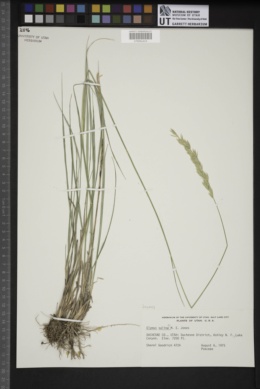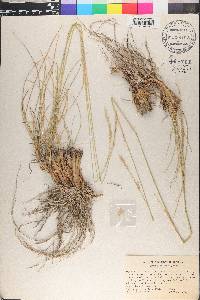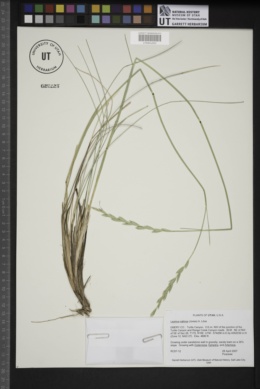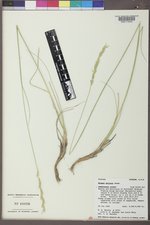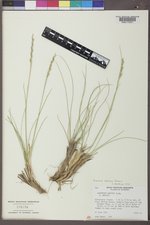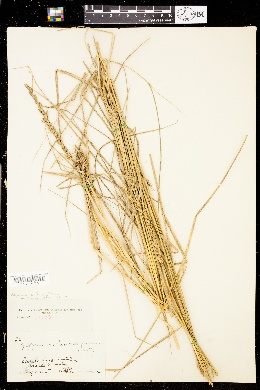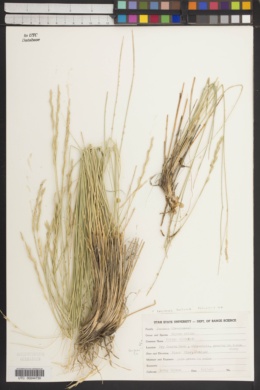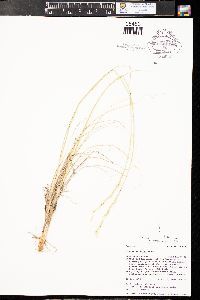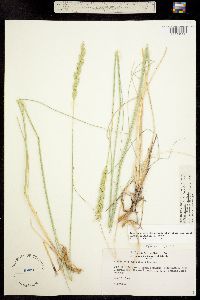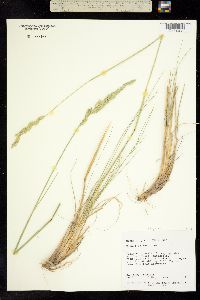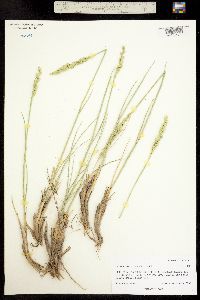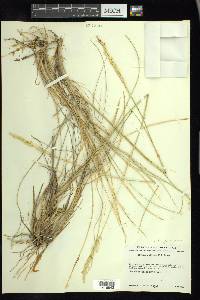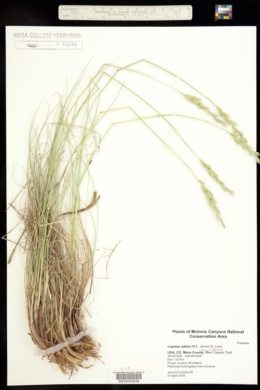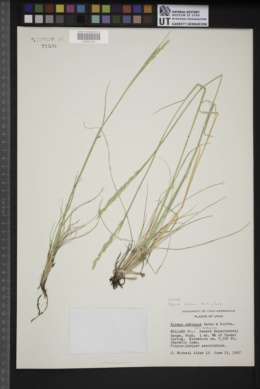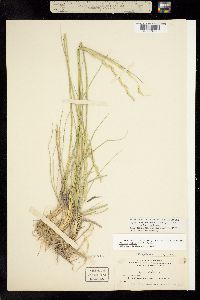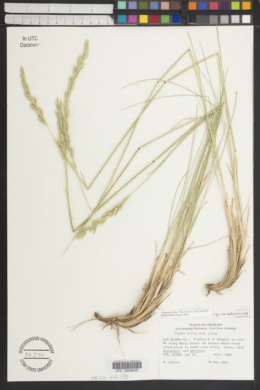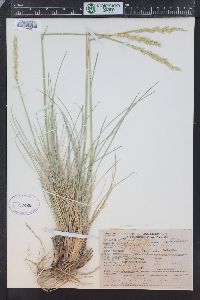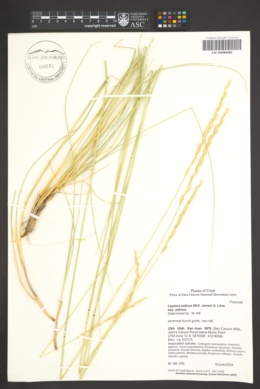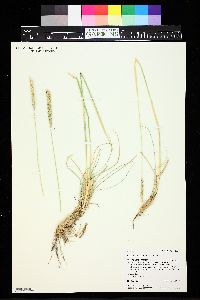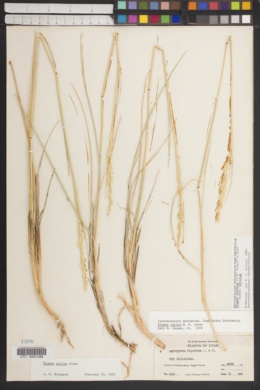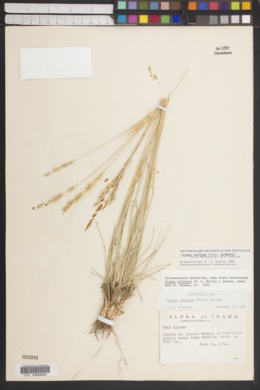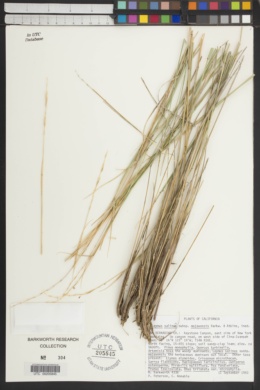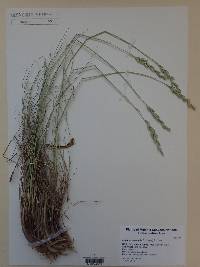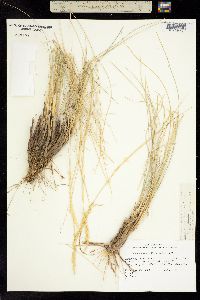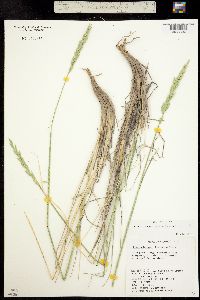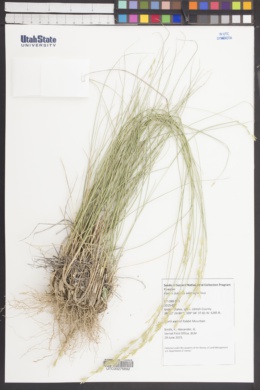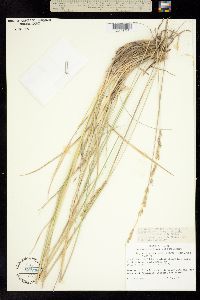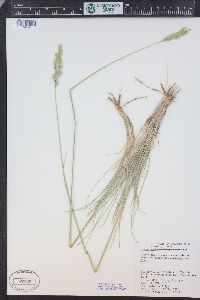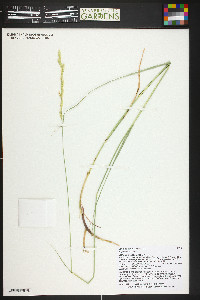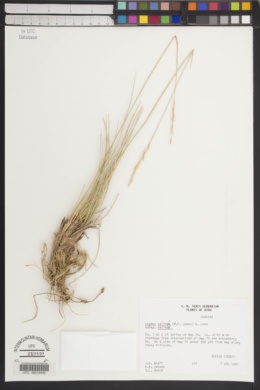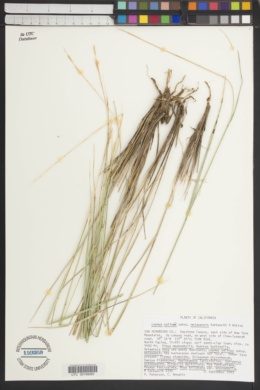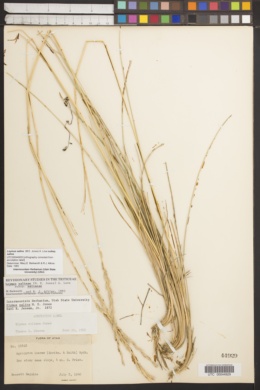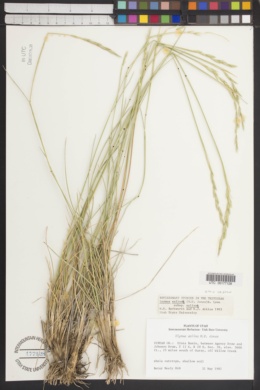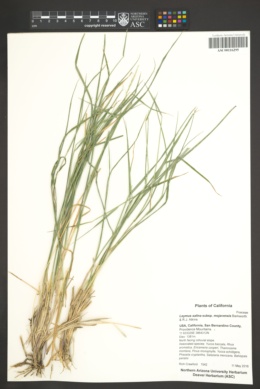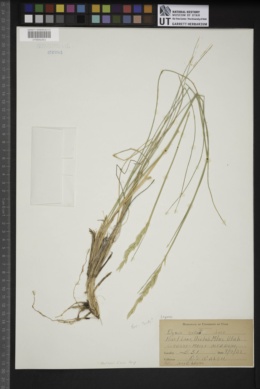Leymus salina
|
|
|
|
Family: Poaceae
Salina Pass Wildrye, more...saline wildrye, salina wildrye, Salinas lyme grass, Salinas wildrye
[Elymus salina M. E. Jones, moreElymus salinus M.E. Jones, Leymus salinus (M.E. Jones) A. Löve] |
Plants cespitose, sometimes weakly rhizomatous. Culms 35-140 cm tall, 1.5-3 mm thick, several together. Leaves exceeded by the spikes; auricles to 1 mm; ligules 0.1-1 mm, truncate; blades 1-5 mm wide, flat to strongly involute, adaxial surfaces glabrous or sparsely to densely hirsute, with 5-9 prominently ribbed, subequal veins. Spikes 4-14 cm long, 4-11 mm wide, nodes below midspike with 1-2(3) spikelets, distal nodes with 1 spikelet; internodes 3.5-9 mm, surfaces glabrous, edges scabrous or strigillose. Spikelets 9-21 mm, pedicellate, pedicels to 1 mm, with 3-6 florets. Glumes unequal to subequal, to 12.5 mm long, 0.5-3.2 mm wide, subulate, stiff, keeled, the central portion thicker than the margins, tapering from below midlength, 0-1(3)-veined, veins inconspicuous at midlength; lower glumes 0-12 mm; upper glumes 3.5-12.5 mm; lemmas 7-12.5 mm, usually glabrous, sometimes sparsely strigillose, unawned or awned, awns to 2.5 mm; anthers 2.5-7.5 mm, dehiscent. The three subspecies of Leymus salina differ in their pubescence and geographic distribution, with subsp. salina-being the most common of the three. The specific epithet comes from the locality of the type collection: Salina Pass, Utah. FNA 2007, USDA, Utah Flora 1983 Common Name: saline wildrye Duration: Perennial Nativity: Native Lifeform: Graminoid General: Densely caespitose perennial to 1.4 meters in height with basal leaves and a spike-like inflorescence containing mostly solitary spikelets; sometimes rhizomatous. Vegetative: Blades flat to involute, 1-5 mm wide, adaxial survaces glabrous or with long hairs, with 5-9 prominent ribs and subequal veins; ligules to 1 mm; stems 35-140 cm tall, several grouped together; leaves exceeded by spikes. Inflorescence: Spikes erect, 4-14 cm long, 4-11 mm wide, lower nodes with 1-2 spikelets, upper nodes with 1 spikelet, internodes 5-13 mm long at midlength of spike, with glabrous surfaces; spikelets usually solitary, sometimes paired, 9-21 mm long, with 1 mm pedicels and 3-6 florets; glumes 12 mm long, stiff, keeled, with 0-1 vein; glumes and lemmas to 12 mm long, lemmas usually glabrous, may or may not have awns, awns to 2 mm long; anthers 2-7 mm long. Ecology: Found on dry, sandy or rocky sites in desert shrub, sagebrush, and pinyon-juniper forests, sometimes in ponderosa and aspen-fir forests up to 10,000 ft. (3050 m). Distribution: California, Nevada, Arizona, Utah, New Mexico, Colorado, Wyoming, Idaho, Montana Notes: Leymus salina ssp. salina can be distinguished by its glabrous basal sheaths, strongly involute blades, and usually by dense hairs just above the ligules. There has been confusion over whether the epithet is salina or salinus; some present day sources use salina while others use salinas. Ethnobotany: Unknown Editor: LKearsley, 2012 Etymology: Leymus is an anagrram of Elymus, which is Greek for millet, while salina refers to "the locality of the type collection: Salina Pass, Utah." |



